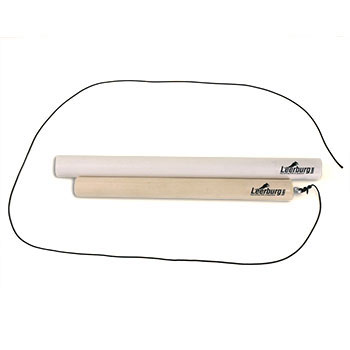May 18, 2011
My dog will not come when I take the leash off. I think I have created this problem, but don’t know how to fix it...?
Full Question:
I have written to you before, taken your advice and bought your Basic Obedience video. My 9-month-old GSD bitch is great in most respects (temperament & basic commands) however she has developed a serious habit of refusing to come when called. The situation is that we live on a beachfront where lots of people walk their dogs - there are also many parks nearby. Most of the time she minds (especially if I have a toy - she does not seem to respond to food) but sometimes she decides to keep her distance and refuses to come back at all. In fact, when I call her she runs off in the opposite direction and treats it like a game. The longest time has been 4 hours!!!I have tried putting her on a long line and shortening it gradually and this has worked to some extent. However, when I remove it completely, 2 or 3 walks later, the game begins again. I have also tried sitting down, ignoring her, walking away, going out of sight but she will wait just level with the house and not come back.
How do I solve this problem, which I know I must have inadvertently created? At the moment I take a toy with me every time we go out and we also attend dog training classes (outdoors, on/off leash). Is it possible for you to tell me what I am doing wrong?
Thank you in advance,
Lorna

 Cindy's Answer:
Cindy's Answer:
You are correct, this is 100% your fault.
A young dog must learn that there is NEVER a situation where it can get away without coming. This means that if a dog is called (when off leash) and buggers off, you must calmly follow the dog until you can walk up to him and get a hold of him. At that point it gets very, very hard corrections all the way back to the location where you were when you had first called the dog.
This must happen EVERY SINGLE TIME. Their can NEVER be a case where the dog does not get corrected for not coming.
Now with this said, I must say that it is always harder to correct a problem than to do proper training the first time around. You have created a problem so fixing it is not going to be this simple. Your dog has learned that it can avoid you. It has learned when the long line is not on. The solution for a dog like this is an electric collar.
A young dog must learn that there is NEVER a situation where it can get away without coming. This means that if a dog is called (when off leash) and buggers off, you must calmly follow the dog until you can walk up to him and get a hold of him. At that point it gets very, very hard corrections all the way back to the location where you were when you had first called the dog.
This must happen EVERY SINGLE TIME. Their can NEVER be a case where the dog does not get corrected for not coming.
Now with this said, I must say that it is always harder to correct a problem than to do proper training the first time around. You have created a problem so fixing it is not going to be this simple. Your dog has learned that it can avoid you. It has learned when the long line is not on. The solution for a dog like this is an electric collar.
93% (13 out of 14)
respondents found this answer helpful


Can't find what you're looking for?







